Themed collection International Year of the Periodic Table: Applications for magnetic materials

Label-free manipulation via the magneto-Archimedes effect: fundamentals, methodology and applications
This review focuses on the fundamentals and state-of-the-art label-free manipulation techniques based on the magneto-Archimedes effect.
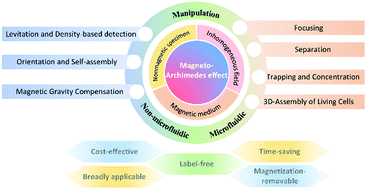
Mater. Horiz., 2019,6, 1359-1379
https://doi.org/10.1039/C8MH01616J
Stimuli-responsive bio-based polymeric systems and their applications
This article highlights the properties of stimuli-responsive bio-based polymeric systems and their main intelligent applications.
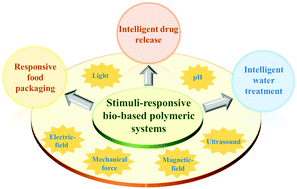
J. Mater. Chem. B, 2019,7, 709-729
https://doi.org/10.1039/C8TB02491J
Magnetic nanoarchitectures for cancer sensing, imaging and therapy
The complexity and applicability of magnetic nanoparticles for sensing and theranostics of cancer has grown substantially in the last decade.
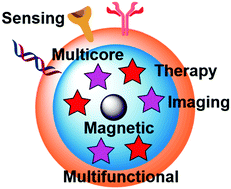
J. Mater. Chem. B, 2019,7, 9-23
https://doi.org/10.1039/C8TB02741B
Magnetic protein imprinted polymers: a review
Synthesis of protein imprinted polymers coupled to magnetic nanoparticles to obtain specific recognition systems is very promising, but is still challenging.
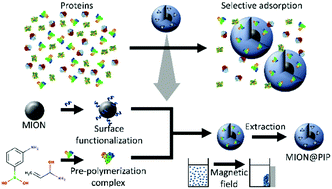
J. Mater. Chem. B, 2018,6, 1563-1580
https://doi.org/10.1039/C7TB02985C
Progress of recyclable magnetic particles for biomedical applications
The preparation, types, recycling methods, biomedical applications and outlook of recyclable magnetic particles have been reviewed.
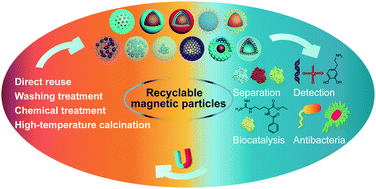
J. Mater. Chem. B, 2018,6, 366-380
https://doi.org/10.1039/C7TB02941A
Tunable amplified spontaneous emission based on liquid magnetically responsive photonic crystals
The wavelength of amplified spontaneous emission based on liquid magnetically responsive photonic crystals can be tuned by simply changing the magnetic field intensity.
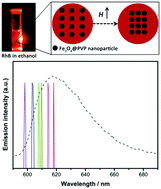
J. Mater. Chem. C, 2019,7, 3740-3743
https://doi.org/10.1039/C8TC05763J
Extraction of rare earth elements using magnetite@MOF composites
Magnetic core–shell microspheres were developed to extract rare earth elements (REEs) from aqueous and brine solutions with up to 99.99% removal efficiency. The shell, composed of a thermally and chemically stable functionalized metal–organic framework (MOF), is grown over a synthesized Fe3O4 magnetic core (magnetite@MOF).
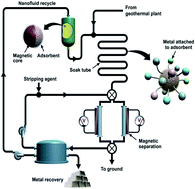
J. Mater. Chem. A, 2018,6, 18438-18443
https://doi.org/10.1039/C8TA04750B
Hybrid magnetite–gold nanoparticles as bifunctional magnetic–plasmonic systems: three representative cases
Controlling the electromagnetic field distribution of magnetite–gold hetero-structures by tailoring the geometry of the magnetic- and plasmonic-constituents.
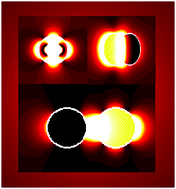
Nanoscale Horiz., 2017,2, 205-216
https://doi.org/10.1039/C6NH00225K
Novel synthesis of platinum complexes and their intracellular delivery to tumor cells by means of magnetic nanoparticles
Platinum-based drugs are popular in clinics as chemotherapeutic agents to treat solid tumors.

Nanoscale, 2019,11, 23482-23497
https://doi.org/10.1039/C9NR07015J
Metronidazole-functionalized iron oxide nanoparticles for molecular detection of hypoxic tissues
Functionalization of dendronized iron oxide nanoparticles with the bioreductive compound metronidazole for magnetic resonance imaging of hypoxic tissues.
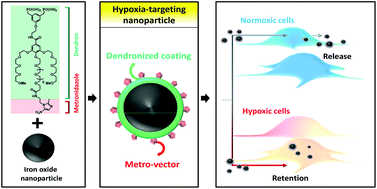
Nanoscale, 2019,11, 22559-22574
https://doi.org/10.1039/C9NR08436C
Multifunctional temozolomide-loaded lipid superparamagnetic nanovectors: dual targeting and disintegration of glioblastoma spheroids by synergic chemotherapy and hyperthermia treatment
The proposed nanoplatform represents an efficient tool for a synergic treatment based on hyperthermia and chemotherapy against glioblastoma.
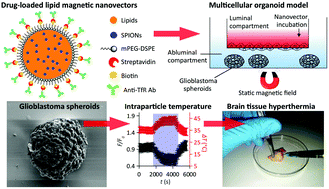
Nanoscale, 2019,11, 21227-21248
https://doi.org/10.1039/C9NR07976A
Magnet-activatable nanoliposomes as intracellular bubble microreactors to enhance drug delivery efficacy and burst cancer cells
The magnetic nanoliposomes could be transferred as intracellular bubble microreactors to bomb tumor cell by responding magneto-acoustic force.
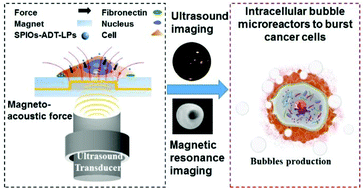
Nanoscale, 2019,11, 18854-18865
https://doi.org/10.1039/C9NR07021D
Impact of magnetic nanoparticle surface coating on their long-term intracellular biodegradation in stem cells
A polymer coating with multiple binding sites provides iron oxide nanoparticles with protection against intracellular degradation.
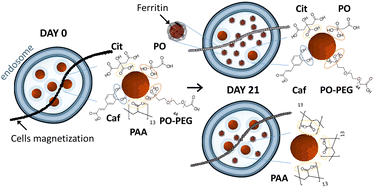
Nanoscale, 2019,11, 16488-16498
https://doi.org/10.1039/C9NR05624F
Embedding of superparamagnetic iron oxide nanoparticles into membranes of well-defined poly(ethylene oxide)-block-poly(ε-caprolactone) nanoscale magnetovesicles as ultrasensitive MRI probes of membrane bio-degradation
The present study reports the preparation of PEO-b-PCL polymer vesicles via a nanoprecipitation method and the loading of hydrophobically coated USPIO into the membrane of these nanovesicles, whose thickness was measured precisely by SANS.
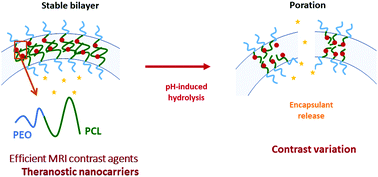
J. Mater. Chem. B, 2019,7, 4692-4705
https://doi.org/10.1039/C9TB00909D
A biomimetic magnetosome: formation of iron oxide within carboxylic acid terminated polymersomes
Bioinspired macromolecules can aid nucleation and crystallisation of minerals by mirroring processes observed in nature.
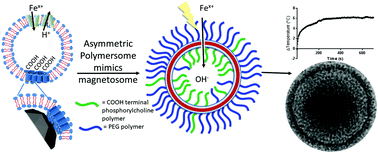
Nanoscale, 2019,11, 11617-11625
https://doi.org/10.1039/C9NR00498J
Polydopamine-decorated tobacco mosaic virus for photoacoustic/magnetic resonance bimodal imaging and photothermal cancer therapy
The Gd-TMV–PDA nanotheranostic reagents demonstrated highly r1-relaxivity of ∼80 mM−1 s−1 at 60 MHz, strong near-infrared absorption with high photothermal conversion efficiency (28.9%), excellent photoacoustic contrast and good biocompatibility.
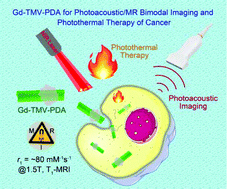
Nanoscale, 2019,11, 9760-9768
https://doi.org/10.1039/C9NR02065A
Anisotropic manganese antimonide nanoparticle formation by solution–solid–solid growth mechanism: consequence of sodium borohydride addition towards reduced surface oxidation and enhanced magnetic moment
Novel synthetic route to synthesize solution-phase anisotropic MnSb nanoparticles was developed and the solution–solid–solid growth mechanism was elucidated.
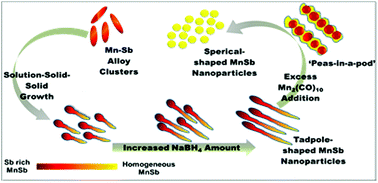
Nanoscale, 2019,11, 6886-6896
https://doi.org/10.1039/C8NR09142K
To heat or not to heat: a study of the performances of iron carbide nanoparticles in magnetic heating
This study shows why FeC NPs of similar structures and static magnetic properties display radically different heating power (SAR from 0 to 2 kW g−1).
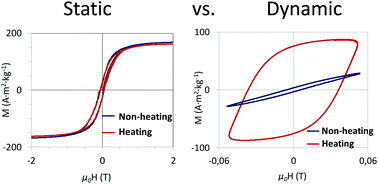
Nanoscale, 2019,11, 5402-5411
https://doi.org/10.1039/C8NR10235J
The limit to realize an isolated magnetic single skyrmionic state
The limit to realize an isolated single skyrmion is investigated when the particle size approaches to the length scale of the relevant order parameter.
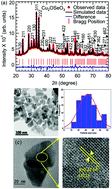
J. Mater. Chem. C, 2019,7, 1337-1344
https://doi.org/10.1039/C8TC03968B
In vivo fate of free and encapsulated iron oxide nanoparticles after injection of labelled stem cells
Free and encapsulated iron oxide nanoparticles after intracardiac injection of labelled stem cells have similar in vivo fate.
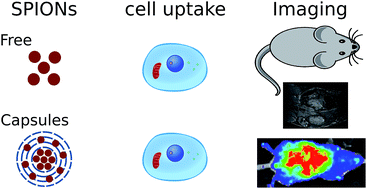
Nanoscale Adv., 2019,1, 367-377
https://doi.org/10.1039/C8NA00098K
Shaping iron oxide nanocrystals for magnetic separation applications
The large magnetophoretic mobility stemming from the large magnetic susceptibility and the very small coercivity of octapod-shaped iron oxide nanoparticles improve their capability for magnetic separation.
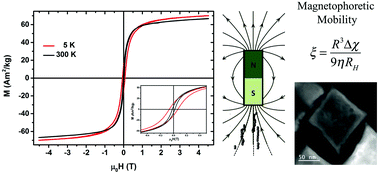
Nanoscale, 2018,10, 20462-20467
https://doi.org/10.1039/C8NR05864D
Iron oxide nanoparticles for targeted imaging of liver tumors with ultralow hepatotoxicity
Even though iron oxide (Fe3O4) nanoparticles are promising materials for magnetic resonance imaging (MRI) contrast agents, their biocompatibility and targeting efficacy still need to be improved.
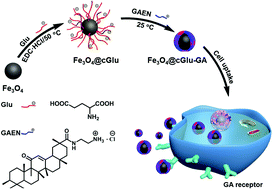
J. Mater. Chem. B, 2018,6, 6413-6423
https://doi.org/10.1039/C8TB01657G
Microwave-assisted preparation of paramagnetic zwitterionic amphiphilic copolymer hybrid molybdenum disulfide for T1-weighted magnetic resonance imaging-guided photothermal therapy
Magnetic resonance imaging (MRI)-guided photothermal therapy (PTT) has recently attracted tremendous attention.
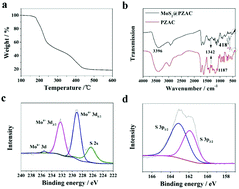
J. Mater. Chem. B, 2018,6, 6391-6398
https://doi.org/10.1039/C8TB01660G
On the thermotropic and magnetotropic phase behavior of lipid liquid crystals containing magnetic nanoparticles
The inclusion of superparamagnetic iron oxide nanoparticles (SPIONs) in lipid mesophases is a promising strategy for drug-delivery applications, combining the innate biocompatibility of lipid architectures with SPIONs’ response to external magnetic fields.
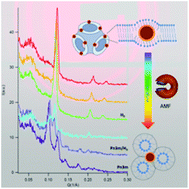
Nanoscale, 2018,10, 3480-3488
https://doi.org/10.1039/C7NR08478A
Encapsulating nanoscale zero-valent iron with a soluble Mg(OH)2 shell for improved mobility and controlled reactivity release
NZVI with novel Mg(OH)2 encapsulation for considerably improved mobility, chemical stability, and controlled reactivity release for environmental remediation.
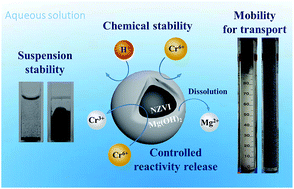
J. Mater. Chem. A, 2018,6, 2517-2526
https://doi.org/10.1039/C7TA08605A
Single-crystalline Gd-doped BiFeO3 nanowires: R3c-to-Pn21a phase transition and enhancement in high-coercivity ferromagnetism
Enhancement in high-coercivity ferromagnetism of hydrothermally synthesized single-crystalline Gd-doped BiFeO3 nanowires.
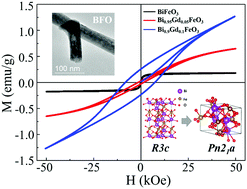
J. Mater. Chem. C, 2018,6, 526-534
https://doi.org/10.1039/C7TC05362B
Janus plasmonic–magnetic gold–iron oxide nanoparticles as contrast agents for multimodal imaging
Janus Au–Fe3O4 star-sphere nanoparticles show their high versatility as contrast agents in multimodal imaging.

Nanoscale, 2017,9, 9467-9480
https://doi.org/10.1039/C7NR01406F
Liquid crystalline phases from polymer functionalized ferri-magnetic Fe3O4 nanorods
LC-phases from ferrimagnetic nanoparticles formed due to their anisotropy of form, and they can be modified using external magnetic fields.
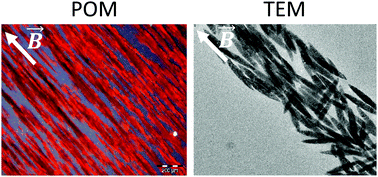
J. Mater. Chem. C, 2017,5, 6688-6696
https://doi.org/10.1039/C7TC01106G
Bifunctional plasmonic-magnetic particles for an enhanced microfluidic SERS immunoassay
A novel bifunctional plasmonic-magnetic particle-based microfluidic immunoassay system is developed. It could reduce assay time from 4 hours to 80 minutes and enhance the SERS detection specificity by about 70%.
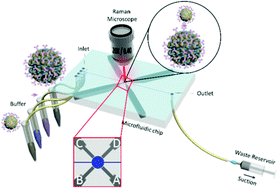
Nanoscale, 2017,9, 7822-7829
https://doi.org/10.1039/C7NR01511A
NMR studies of the interactions between AMB-1 Mms6 protein and magnetosome Fe3O4 nanoparticles
NMR studies demonstrate that, the C-terminal Mms6 undergo conformation change upon magnetosome Fe3O4 crystals binding. The N-terminal hydrophobic packing arranges the DEEVE motifs into a correct assembly and orientation for magnetite crystal recognition.
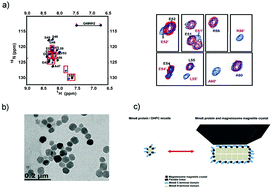
J. Mater. Chem. B, 2017,5, 2888-2895
https://doi.org/10.1039/C7TB00570A
Switchable 3-0 magnetoelectric nanocomposite thin film with high coupling
We show PbZr0.52Ti0.48O3 (PZT) and CoFe2O4 (CFO) nanocomposite with high magnetoelectric coupling, capable of switching ferroelectric domains with magnetic fields.
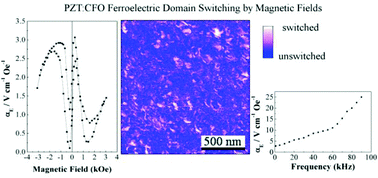
Nanoscale, 2017,9, 3246-3251
https://doi.org/10.1039/C6NR08674H
About this collection
This themed collection is the seventh, and final, in a series celebrating the International Year of the Periodic Table. ‘As Attractive as Magnets – Applications for Magnetic Materials’ features papers from across the Materials and Nano journal portfolio; Materials Horizons, Nanoscale Horizons, Nanoscale, Nanoscale Advances and Journal of Materials Chemistry A, B & C. The papers selected for this themed issue focus on the current hot trends in the field of magnetic materials.
Guest Edited by;
Gemma-Louise Davies, University College London, UK, Journal of Materials Chemistry B Associate Editor
Jessica Winter, Ohio State University, USA, Journal of Materials Chemistry B Associate Editor
Shouheng Sun, Brown University, USA, Nanoscale and Nanoscale Advances Associate Editor